
231 Australian Cinema 2008
Horror and Science Fiction
This week readings | Australasian horror/scifi/fantasy films
Clips
Horror clips
Long Weekend (Colin Eggleston, 1979)
The Marsupials: The Howling III (Philippe Mora, 1987)
Undead (Spierig Brothers, 2003)
Wolf Creek (Greg Mclean, 2005)

Scifi clips
Pitch Black (David N. Twohy, 2000)
Salute of the Jugger (David Peoples, 1989) aka Blood of Heroes
The Time Guardian (Brian Hannant, 1987)
Dark City (Alex Proyas, 1998)
Main screening
Razorback (Russell Mulcahy, 1984)
Horror
Errol Vieth begins the two chapters that he wrote - on horror and science fiction - with a discussion of the notion of the fantastic, a category discussed by Tzvetan Todorov in his book on the subject. I'll give you a longer quotation than Vieth does, from Todorov's Chapter 2, 'A definition of the fantastic'.
In a world which is indeed our world, the one we know, a world without devils, sylphides, or vampires, there occurs an event which cannot be explained by the laws of this same familiar world. The person who experiences the event must opt for two possible solutions: either he is the victim of an illusion of the senses, of a product of the imagination - and the laws of the world remain what they are; or else the event has indeed taken place, it is an integral part of reality - but then this reality is controlled by laws unknown to us. Either the devil is an illusion, an imaginary being; or else he really exists, precisely like other living beings - with this reservation, that we encounter him infrequently.
The fantastic occupies the duration of this uncertainty. Once we choose one answer or the other, we leave the fantastic for a neighboring genre, the uncanny or the marvellous. The fantastic is that hesitation experienced by a person who knows only the laws of nature, confronting an apparently supernatural event. (Todorov 1975: 25)
Todorov's best example is Henry James's story The Turn of the Screw, in which the author works very hard throughout to keep open both possibilities and both explanations: either the former governess, Miss Jessell, is nuts, or she and Peter Quint are literally evil incarnate. [note 1] The outstanding cinematic example, at least in Australian cinema, is Picnic at Hanging Rock (Peter Weir, 1975), where the girls' disappearance is difficult to explain as anything other than 'a supernatural event'. The film is based on Joan Lindsay's fiction - though many people got hold of the idea that it was a historical event. There was so much discussion of the novel that Lindsay published a revised edition, in which she 'explained' the disappearance - and sold more copies.
Not all Australian stories in these categories (horror/SF) are in the realm of the fantastic. Although Wolf Creek (Greg McLean, 2005) has a small element of fantasy (in the stopping of the watches, etc.) most of it is just plain naturalistic horror. Conversely, there's nothing much naturalistic about Undead (Spierig Brothers, 2003), which is well and truly rooted in the supernatural - to the point of sending itself up. Some Australian films, however, do inhabit this realm of hesitation. The longer The Cars That Ate Paris (Peter Weir, 1974) goes on, the more weird and gothic it becomes, and social problem readings lose interest. As is also the case with Long Weekend (Colin Eggleston, 1979). You wouldn't watch it if I told what kind of creature was the nemesis - the carrier of retributive justice - but it does work. Patrick (Richard Franklin, 1978) is Hitchcockian in style, but fantastic in its subject, as is much of Franklin's later film, Visitors (2003).
I introduced the idea of the gothic just then, in passing, but it's central to the work of David Thomas, who was awarded his PhD in 2007 for a dissertation on the topic. The paper that we published in Metro investigates this topic, as does the chapter in Ten Types.
Neale begins his discussion of horror and science fiction by pointing out that it is 'sometimes very difficult to distinguish between' them (Neale 2000: 92). He does not seem to feel a need to define 'horror' very explicitly, beyond agreeing with a number of other writers that 'its principal aesthetic aim - "to horrify"'. A common feature of horror films, however, is some kind of monster - though the monster is as likely to be inside us as outside, as Tudor writes.
While the horror movies of the first three decades [1930-1960] revolve around the twin poles of science and supernature, and their monsters threaten us largely, though not entirely, from 'outside', the second three decades [1961-1984] bring the genre's central threat much closer to us. In these years the horror movie begins to articulate a radically different anxiety. The threat posed by post-1960s horror movies can be seen as expressing a profound insecurity about ourselves, and accordingly the monsters of the period are increasingly represented as part of an everyday contemporary landscape. That is why of all horror movie creatures it is the psychotic that is pre-eminent (Tudor 1989: 48; cited in Neale 2000: 97).
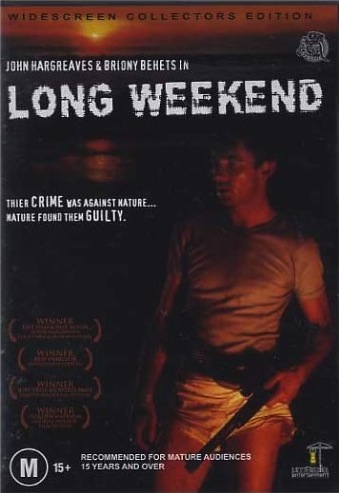
Australian horror films have examples of both. The simplest kind of external monster is something in nature which is a gross or dangerous example of its kind, or which has turned nasty. Examples include Dark Age (Arch Nicholson, 1986) - crocodile; Link (Richard Franklin, 1986) - killer chimpanzee; Long Weekend (Colin Eggleston, 1979) - dugong (yes, dugong [manatee]!); Razorback (Russell Mulcahy, 1984) - giant pig; and Rogue (Greg McLean, 2007) - another crocodile.
Long Weekend (Colin Eggleston, 1979)
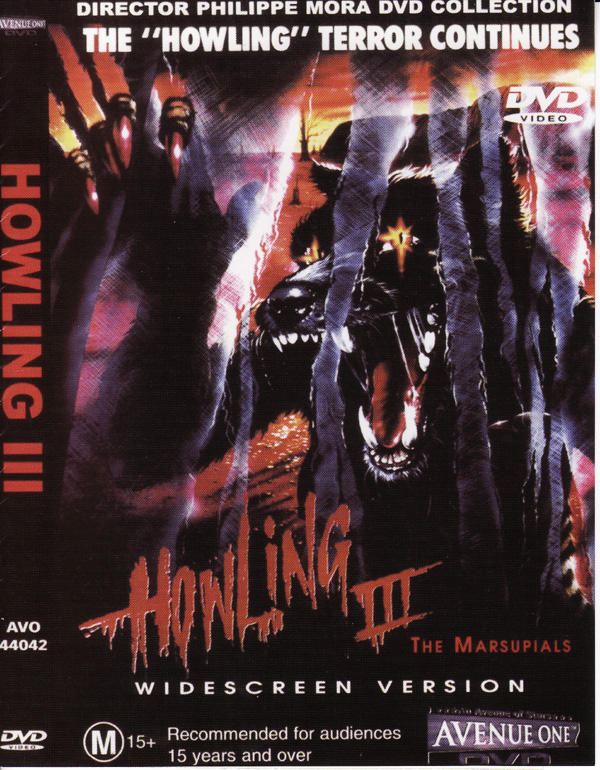 A large number of films involve some kind of supernatural threat. A couple of examples are unique to Australia, as they involve a representation of Aboriginal spirituality of some kind: Kadaicha (James Bogle, 1987) and The Min-Min (Carl T. Woods, 1990). A couple more films are worth mentioning in this context, although they belong mainly in previous categories: Howling III: The Marsupials (Philippe Mora, 1987) and Zombie Brigade (Barrie Pattison, 1987). There are many supernatural thrillers: see the list on this site.
A large number of films involve some kind of supernatural threat. A couple of examples are unique to Australia, as they involve a representation of Aboriginal spirituality of some kind: Kadaicha (James Bogle, 1987) and The Min-Min (Carl T. Woods, 1990). A couple more films are worth mentioning in this context, although they belong mainly in previous categories: Howling III: The Marsupials (Philippe Mora, 1987) and Zombie Brigade (Barrie Pattison, 1987). There are many supernatural thrillers: see the list on this site.
The Marsupials: The Howling III (Philippe Mora, 1987) [clip "scream" 20.01 - 24.44]
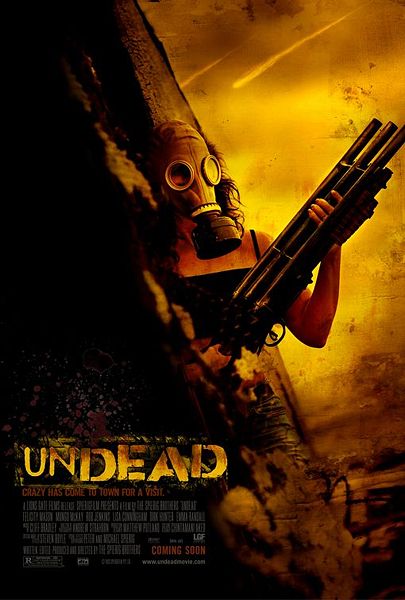 Then there are the monsters which derive from the Dracula tradition, the vampires of: Bloodlust (Richard Wolstencroft & Jon Hewitt, 1991); Outback Vampires (Colin Eggleston, 1987); Thirst (Rod Hardy, 1979); and perhaps The Twins (Leslie McCallum, 1923). And from the Frankenstein tradition, perhaps, the undead of: Braindead (Peter Jackson, 1992) NZ; Death Warmed Up (David Blyth, 1984) NZ; Undead (Michael Spierig, Peter Spierig, 2003); and Zombie Brigade (Barrie Pattison, 1987). There is even a werewolf film, though here the werewolves have become marsupials: The Marsupials: The Howling III (Philippe Mora, 1987).
Then there are the monsters which derive from the Dracula tradition, the vampires of: Bloodlust (Richard Wolstencroft & Jon Hewitt, 1991); Outback Vampires (Colin Eggleston, 1987); Thirst (Rod Hardy, 1979); and perhaps The Twins (Leslie McCallum, 1923). And from the Frankenstein tradition, perhaps, the undead of: Braindead (Peter Jackson, 1992) NZ; Death Warmed Up (David Blyth, 1984) NZ; Undead (Michael Spierig, Peter Spierig, 2003); and Zombie Brigade (Barrie Pattison, 1987). There is even a werewolf film, though here the werewolves have become marsupials: The Marsupials: The Howling III (Philippe Mora, 1987).
Undead (Spierig Brothers, 2003) [clip "title" 7.17 - 13.33]
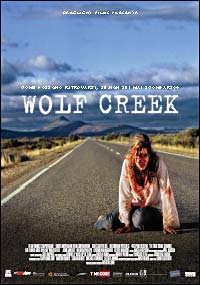 Last year I showed Wolf Creek (Greg Mclean, 2005) as the main screening for this week, but I think it's hard going, so this year I'll just show a few minutes to give you an idea of its particular kind of horror - which is psychological rather than supernatural. In this clip you'll see:
Last year I showed Wolf Creek (Greg Mclean, 2005) as the main screening for this week, but I think it's hard going, so this year I'll just show a few minutes to give you an idea of its particular kind of horror - which is psychological rather than supernatural. In this clip you'll see:
-
an iconic Australian car - it's a Holden Statesman
-
a typical Australian bushman (called Mick, like Mick Dundee in that Crocodile film) who is a sharpshooter (it's his profession - yes, we have professional shooters)
-
typical Australian mise-en-scene: the endless, lawless road (until recently highways in the Northern Territory had no speed limit)
-
the shot which the marketers chose as the most typical of the movie
-
and possibly also some Australian quirkiness in the events depicted (hands up who knows what a thermos is).
Clip from Wolf Creek (Greg Mclean, 2005): Kristy (Kestie Morassi) nearly escapes.
Science Fiction
Whereas the name 'horror films' indicates that these movies are grouped because of the effect they are intended to produce, referring to 'science fiction films' directs the attention rather to the content or the context of the stories within. Whereas Neale - and Vieth - were not comfortable with defining 'horror' very precisely, Neale immediately jumps in with his preferred definition, from Richard Hodgens:
'Science fiction', he writes, 'involves extrapolated or fictitious science, or fictitious use of scientific possibilities, or it may be simply fiction that takes place in the future or introduces some radical assumption about the present or the past' (1959: 30). ... What this means, among other things, is that in science fiction, science, fictional or otherwise, always functions as motivation for the nature of the fictional world, its inhabitants, and the events that happen within it, whether or not science itself is a topic or theme (Neale 2000: 100).
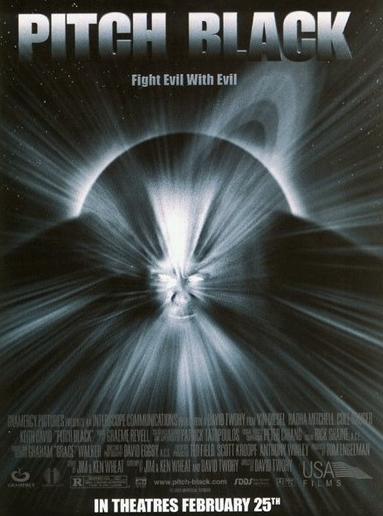
Apart from the Mad Max films, I'm constrained in what I can show you from DVD because so little of Australian scifi has been re-released - if it ever was released on video. However, there's a sufficient range. There's a 'world far away with a funny name' film, Pitch Black (David N. Twohy, 2000). This one comes very highly recommended by our own John McMullan: I think he said it's his favourite film. The interesting thing about it, from a cinematographical point of view, is that it's set on a world in a solar system with three suns - making for interesting lighting possibilities.
Pitch Black (David N. Twohy, 2000) [clip "suns" 15.03 - 21.00]

Then we have a 'let's take the most extreme sport we can think of and project it into the future and make it more extreme' film. Of course, Mad Max 3: Beyond Thunderdome ([Dr] George Miller & George Ogilvie, 1985) is another example of just such a film. But today, let's look at some moments from
Salute of the Jugger (David Webb Peoples, 1989) aka Blood of Heroes, in which 'The time will come when winning is everything '. [note 2] Apparently, 'The Game' is (or was) actually played in Germany: http://www.jugger.de/ (website in German): here are some rules.
Salute of the Jugger (David Peoples, 1989) aka Blood of Heroes [clip "challenge" 1.07.54 - 1.13.25]

Now we have a 'take a scientific concept [time] and play with it [time travel]' film, in
The Time Guardian (Brian Hannant, 1987). Princess Leia herself (Carrie Fisher) is in this one, so let's watch a bit with her in it.
The Time Guardian (Brian Hannant, 1987) [clip "arrival" 25.19 - 30.25]
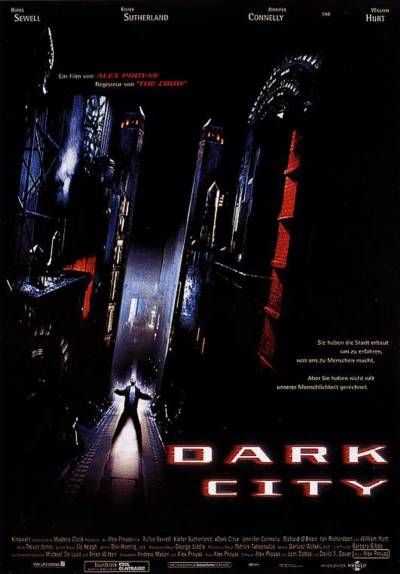 Dark City (Alex Proyas, 1998) is perhaps the most sophisticated scifi movie ever made in Australia - though there is nothing Australian about the film at all. Here is the beginning. John Murdoch (Rufus Sewell) wakes up in a bath.
Dark City (Alex Proyas, 1998) is perhaps the most sophisticated scifi movie ever made in Australia - though there is nothing Australian about the film at all. Here is the beginning. John Murdoch (Rufus Sewell) wakes up in a bath.
Clip from: Dark City (Alex Proyas, 1998) opening voiceover
Notes
1. See the discussion in my book: Garry Gillard, Empowering Readers: Ten Approaches to Narrative, Wakefield Press, Adelaide, where I discuss The Turn of the Screw—going against the grain—in a psychoanalytical context. The best-known film version of the story is perhaps the one called The Innocents (Peter Clayton, 1961), with Deborah Kerr. John Frankenheimer directed another version, with James's title, in 1959, with Ingrid Bergman—and Rusty Lemorande another, in 1994, a British-French production, with Patsy Kensit and Stephane Audran. There are others.
2. With Pitch Black and Salute of the Jugger, the question is likely to arise whether these are 'Australian' films. This is a discussion I'm hoping to avoid. However, I have provided a page to deal with this question, in which Scott Murray specifically deals with Salute of the Jugger. Albert Moran has a more relaxed view of this question (see pp. 2-3 of Film in Australia) although Pitch Black is not discussed by Errol Vieth. IMDb has it as Australia/USA; while the sequel, The Chronicles of Riddick, is simply: USA. The student who did the research for the Pitch Black page discusses this question quite thoroughly.
References
Dermody, Susan & Elizabeth Jacka 1987, The Screening of Australia, volume 2: Anatomy of a National Cinema, Currency Press, Sydney.
Punter David, 2000, A Companion to the Gothic, Blackwell, Oxford.
Todorov, Tzvetan 1975, The Fantastic: A Structural Approach to Literary Genre, Cornell University Press, New York.
Links
Hood, Robert 1994, Killer Koalas: Australian (and New Zealand) Horror Films: A History
Hood, Robert 1994, Australian Horror Films list
Hood, Robert 1994, New Zealand Horror Films list
Wikipedia entry for Howling III | Howling III: The Marsupials at the National Film and Sound Archive
New: 29 April, 2004 | Now: 27 April, 2022









